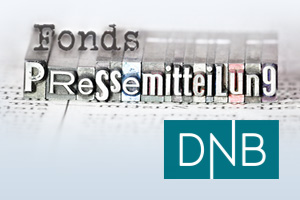– After a weak start in 2016, the stock markets appear to have stabilised
– Macro statistics in rich countries disappointed big in January
– Oil is traded at USD 31 a barrel, in January, prices fluctuated between USD 28 and 37
– Equities are in a correction phase rather than in a lasting slowdown
– We are maintaining the neutral weight in equities in our tactical market outlook
Growth in line with previous year
We are in the midst of a significant correction in the stock markets. If we look to the US stock market, we need to go back to the summer of 2012 to find a larger correction. Several short-term indicators are now giving a buy signal provided that we believe that this is a correction and not the start of a lasting downturn.
The neutral weight in equities has been maintained. The growth picture is still weaker than we would prefer and companies’ pricing power is generally weak. Sales are declining in many sectors, and developments in operating profits have not been impressive. Many companies have repurchased own shares in the market and have thus managed to lift earnings per share. However, about half of these have been debt financed and we do not believe that this will continue. A further upturn in the equity market will depend on better profit performance than we have seen over the last two years. As the financial report season is now starting in the United States, we will gain a better insight into how the last few months of 2015 ended over the next few weeks.
After the correction in January, the equity markets have become low-priced in our models. Norwegian equities (OSEBX) have fallen by almost 11 per cent this year and trade in the lower interval of our estimate of fair value. For investors with a longer perspective, this has historically been a strong buy signal for Oslo Børs. Nevertheless, we choose to maintain underweight in Norwegian equities. This is partly due to the weak momentum in Norwegian companies and partly because we believe that the exchange gains for Norwegian export companies will soon be exhausted. In addition, we fear that the market reaction will be negative if Statoil cuts its dividend.
To summarise, we believe that growth this year will be more or less the same as in 2015. Private consumption in wealthy countries was surprisingly positive last year. Low interest rates and low energy prices, together with a stronger labour market, increase households’ disposable income, may indicated that this can be repeated in 2016. However, in the long term, a high debt ratio will limit consumption growth to a rate corresponding to wage inflation, which will dampen companies’ investment willingness.
Risk weight
Macro statistics have so far in 2016 been weaker than expectations. There is an increased fear that weak performance in the GEM could translate into significantly lower growth in the rest of the world, and capital continues to flow out of GEM countries. Contagion from GEM may be via trade, commodity prices and financial markets. Our main thesis is the contagion effect is not big enough to go to underweight equities. IMF suggests that 1% reduction in economic growth in the GEM reduces the growth in highly developed economies by about 0.25%.
Developments in the surprise indices for Japan has been positive, while the United States has been weaker than expected. Weak ISM figures (under 50) has historically meant lower earnings for US stocks and thus weaker equity markets. We believe the importance of this indicator is less now. The industry accounts for only 12 percent of total GDP as the US economy has become more and more consumer driven. Profit performance also means less of the total profits of listed companies (industrial companies account for 10 percent of the market value of companies in the S & P 500 index). ISM for industry ended slightly below 50 in November and December. ISM reading for the services sector, which represents the major part of the economy, is at positive 55.
Global growth expectations unchanged
Macro statistics in rich countries disappointed big in January. Especially in the US key economic data entered far below expectations and prompted the markets corrected down on renewed growth fears.
Growth in the US will slow down, partly due to a strong dollar, which has reduced the competitiveness of export industries and partly as a result of lower activity in the energy sector. Business key indicators rose slightly in January, but the level is low and still indicates that activity decreases.
Also in Europe, the figures were weaker than expectations, but the underlying positive trend is intact. Companies in both industrial and service sector remains above the 50 mark and leading indicators point to an even stronger growth momentum towards the summer. Chinese growth is gradually weakened by a desired shift from investment led to a consumption-driven economy. Overcapacity in the industry and mining sector is still large, which weigh on the Chinese economy and global commodity prices. Activity in the construction industry declines, but collapse is unlikely because demand remains solid. Inventories are still near record levels, which indicate continued decline in construction activity. On the positive side, the labor market remains buoyant and private consumption is strong. In addition, we believe it will further interest rate cuts and fiscal measures to ensure a soft landing in the economy.
Fears of a collapse in China are exaggerated, but the trend in the US give cause for concern. Growth has been weak enough that the market is pricing in fewer rate hikes in 2016 than the central bank. If it means that the dollar weakens, it will be a good news for commodity prices and global growth prospects.
Less active central banks in the year to come
Interest rates globally remain low except in some emerging economies. In western countries, money market rates are well below nominal GDP growth. The central banks of Japan and Eurozone continues its purchases of securities in order to keep market interest rates and risk premiums low (quantitative easing). The European Central Bank Governor Mario Draghi, has recently repeated that the bank is ready to launch further measures if necessary. However, it is most excitement linked to what the Federal Reserve (Fed) will do next. It has previously indicated that four rate increases applicable for 2016. The interest rate market prices, however hardly indicates rate hikes this year. We think the Fed is unlikely to put their plans aside so quickly after it has just started to raise interest rates, while the US labor market is developing strongly. It must be significantly worse in the US economy before the Fed become apparent to postpone interest rate hikes.
The US and global stock market has benefited from three rounds of quantitative easing (QE) from the Federal Reserve. The ECB has gradually followed by similar measures to defend the euro and prevent debt crises. Japan has launched aggressive measures, including demands that the central bank buys shares, to try to get up inflation and stimulate growth. Although new measures may come, we believe that the best period for the stock market is behind us in terms of monetary policy. Looking ahead, economic growth and earnings to be important guidelines for the stock market. If liquidity again be guiding principles for risk-taking must be China and other emerging economies with leeway to surprise the market with a more expansionary monetary policy.
Recommendations
No losses expected in investment grad
We retain Norwegian bonds on overweight. Credit margins came out from autumn last year, but stabilized in December. In January, they pulled marginally back in. The effective interest in our bond funds with low credit risk (DNB Obligasjon III) is currently 2.3 percent, of which the credit margin amounts to around 150 basis points. The outlook for the Norwegian economy in 2016 is weak and insecure, but hardly so bad that we will experience losses in a portfolio of Norwegian investment grade bonds. Credit margins are unlikely to draw much this year, but government bond yields could fall further if we are right that Norges Bank must cut interest rates more than is priced into the market today. We therefore choose to be overweight Norwegian bond funds with credit risk and a certain duration, fixed-income portfolio. Investors who do not want this interest rate risk may place capital in our money market fund where the effective rate is around 1.7 percent. It is an attractive and little risky alternative to bank deposits.
High yield with a liquidity premium
The credit margin in the high yield segment of the fixed income market is at historically high levels. Moreover, Norwegian papers have a higher margin than European, even if we adjust for different sector weights (energy) in the two markets. It suggests an extra liquidity premium in the Norwegian market. We think this is a good long-term investment, because we do not think the losses will be quite as big as the market now have priced into the high yield market. Meanwhile, the momentum of price drivers on these bonds remains weak (oil), and the companies goes a tough period in the face of numerous restructurings. We await therefore investing in high yield until we are confident that we are close to or have passed the bottom in this market.
Global equities trades at a discount of 17 percent to fair value according to our model, but there are big differences between the various sectors. Defensive sectors are expensive priced, particularly the stable consumption which is also our biggest underweight in our portfolios. Cyclical sectors like energy and materials, and financial trades to historically low multiples and pulls the aggregate valuation down. As we have argued, we are not confident that we have passed the bottom for commodity stocks. We thus retains energy and materials in neutral although it is where one can find many of those cheap stocks now. There is, however, particularly the energy sector that pulls down earnings picture in the United States.
Finance is an overweight due to low pricing, but also because we believe in a somewhat steeper yield curve internationally which normally is positive for margins in this business. The industry has made many new regulations in recent years which reduces the return on equity, but it also helps to make banks more solid. We therefore believe there is a potential for stronger profit growth and higher multiples in the sector.
Health and technology are priced around fair value, but it is possible to argue that these sectors are cheap if we adjust for the large cash holdings on their balance sheets. The earnings trend is strong both in absolute terms and relative to the rest of the market and is a further reason why we retain these sectors on obesity. Private consumption has surprised positively in rich countries, and the conditions are still good going forward which should be positive for cyclical consumer stocks. For example, lower gasoline prices due to fall in oil prices normally beneficial for the automotive and automotive component manufacturers. Shares in this sector rose twice the market return last year without that we think it has become too expensive. Cyclical consumer retained therefore still overweight.
Disclaimer
This presentation is for internal use by Wealth Management, a business area in the DNB Group, for communication aimed at its customers. Wealth Management consists of the fund management company, DNB Asset Management AS and other companies in the asset management area in the DNB Group as well as the Pension & Saving Product Sales division and Private Banking division in DNB Bank ASA. The contents of this presentation are not intended for publication and the information herein may not be reproduced without the consent of Wealth Management.
The information in this presentation is based on information that is available to the public and is not guaranteed to be accurate, free from errors or complete. The views in the presentation reflect our opinions at the time when the presentation was prepared and we reserve the right to change our opinion without warning. The written material that is distributed must be seen in the context of what is said orally during the presentation. The companies in Wealth Management cannot be held liable for direct or indirect losses that are attributable to the how the information in this presentation was understood and/or used.
This presentation should not be construed as either an offer or a recommendation to buy or sell financial instruments. It should be noted that investing in the products presented herein entails risk, which includes a risk of losing all or part of the invested amount. Previous returns are no indication of future returns.
DNB Bank ASA and/or other companies in the DNB group or employees and/or employee representatives may trade or have positions in instruments discussed in this presentation or related instruments, or may provide financial advice and banking services in this connection. Confidentiality rules and other internal rules limit the degree to which certain types of information may be exchanged between different units in DNB. This means that the employees in the business area Wealth Management who have prepared this presentation may be unaware of or not permitted to use certain information held by other companies in the DNB group that could be relevant for this presentation.




